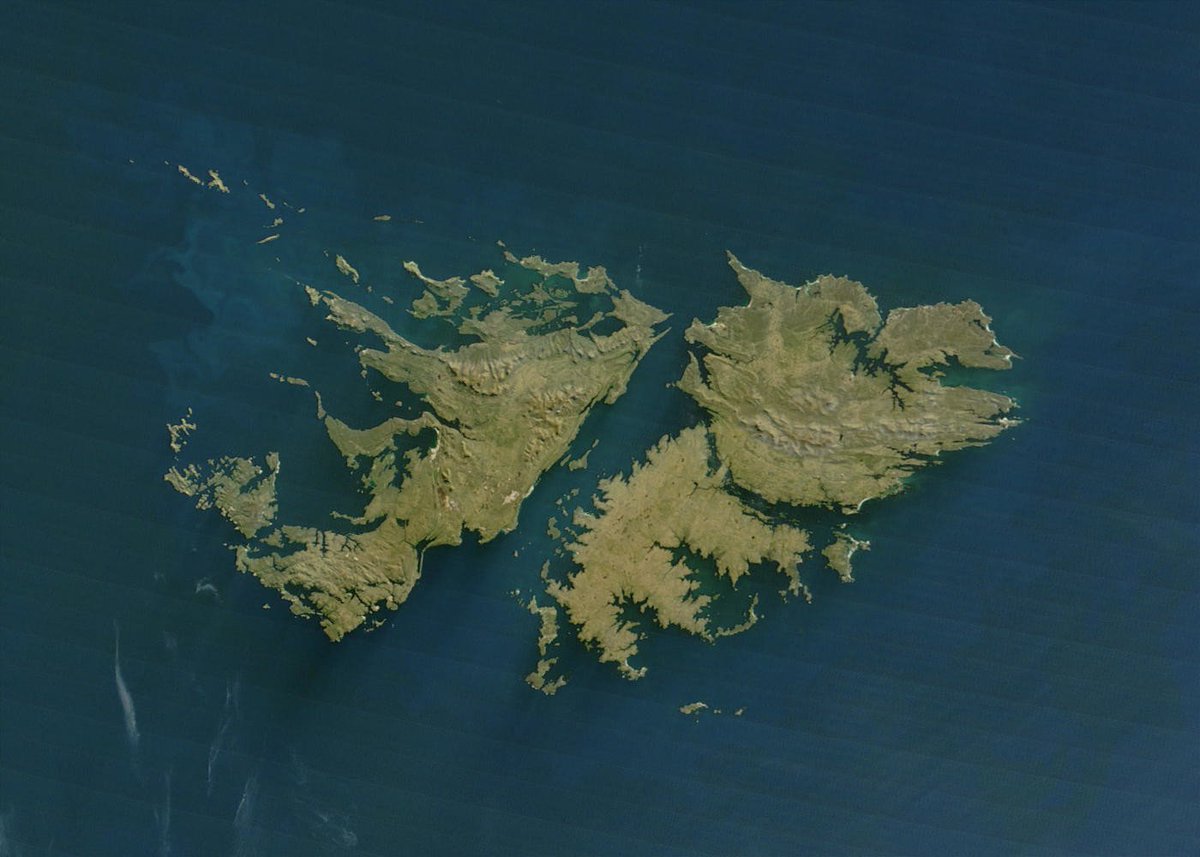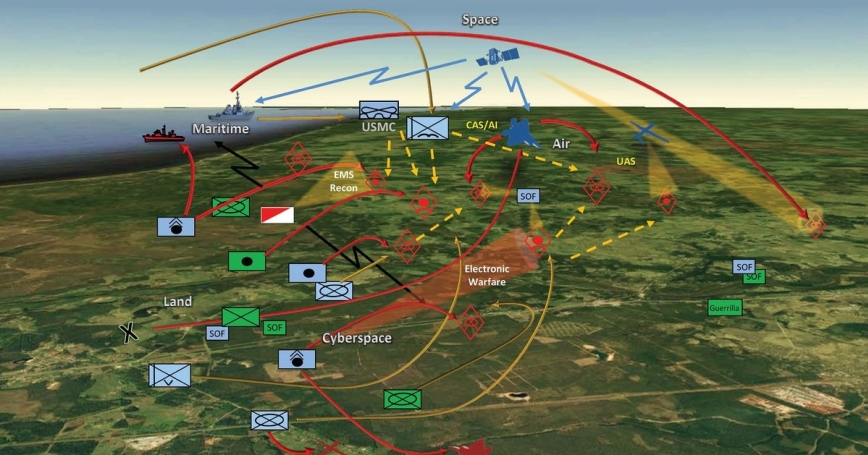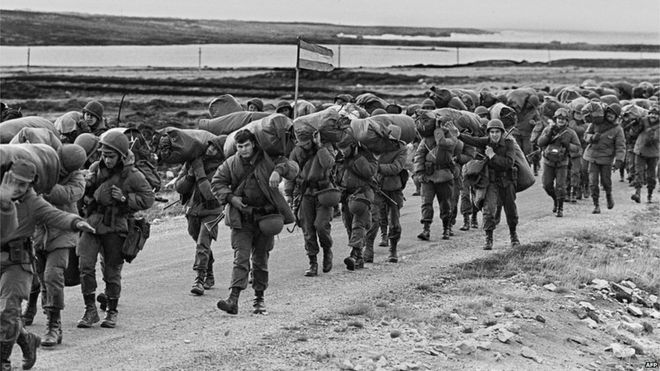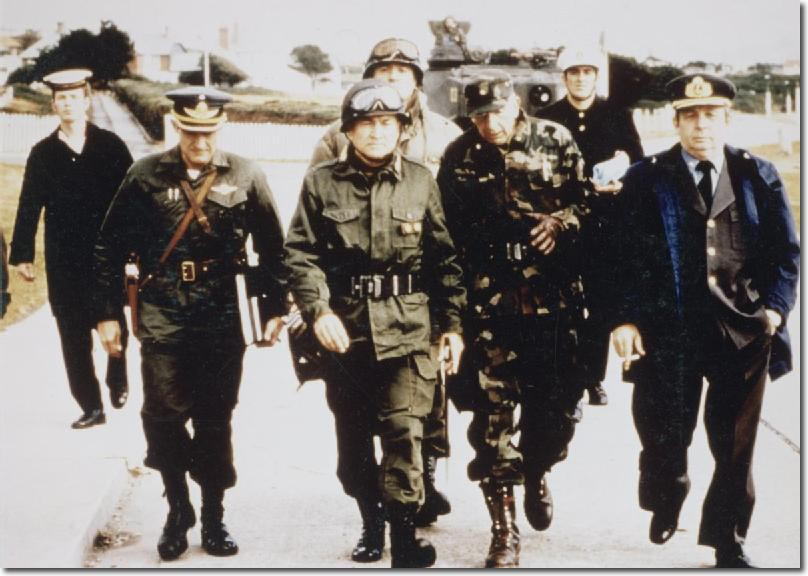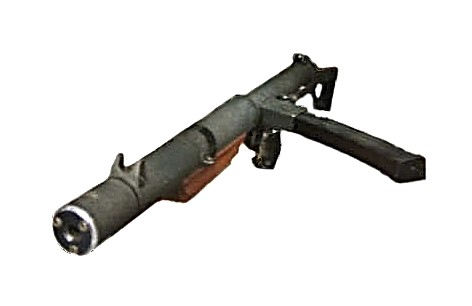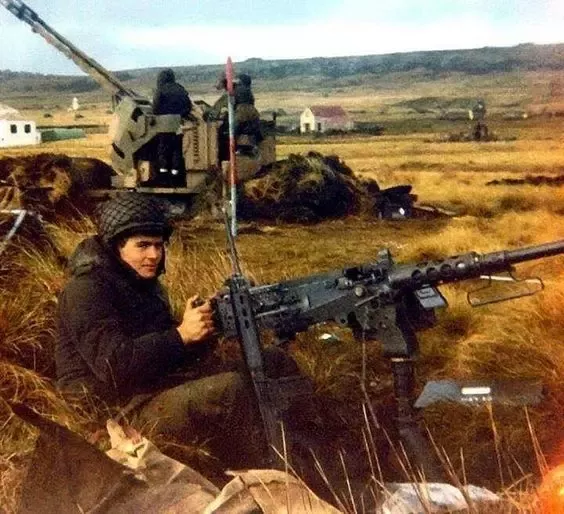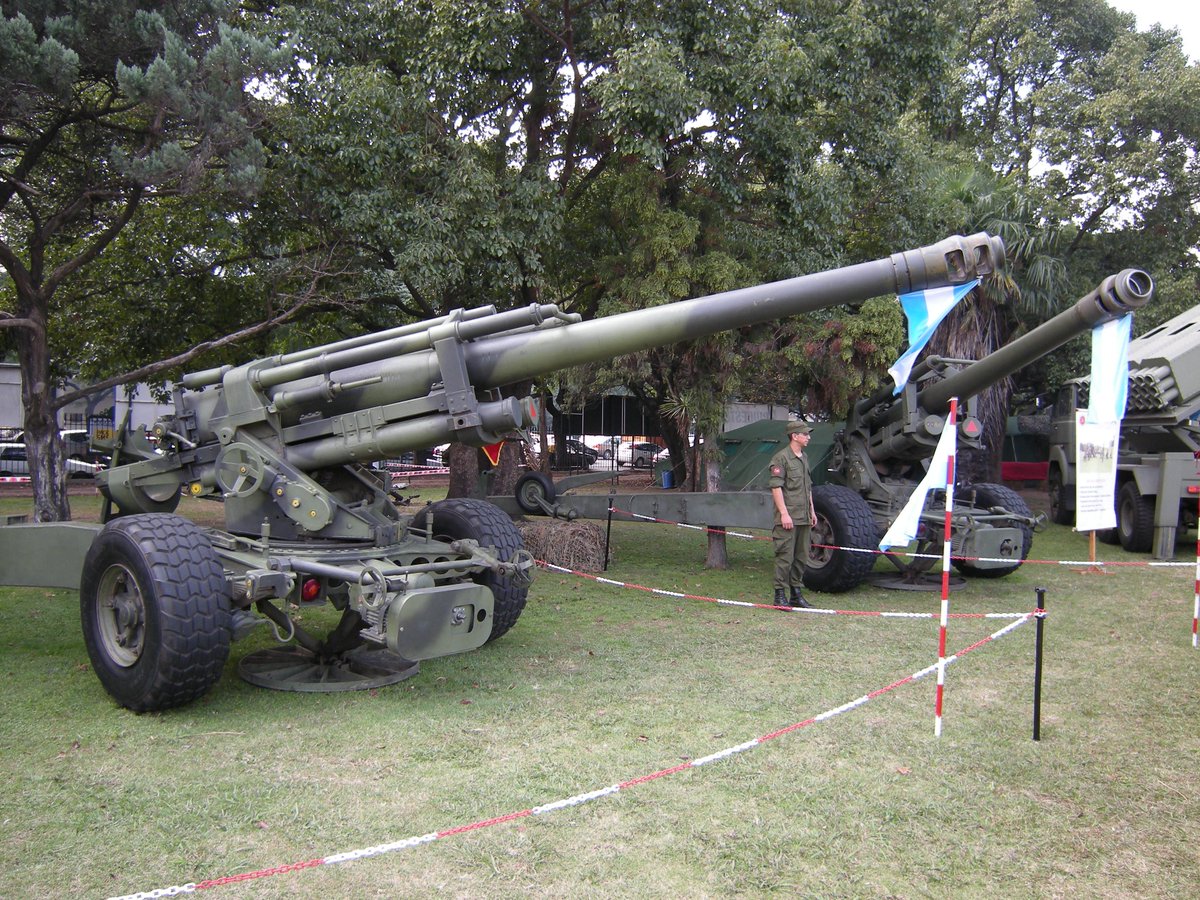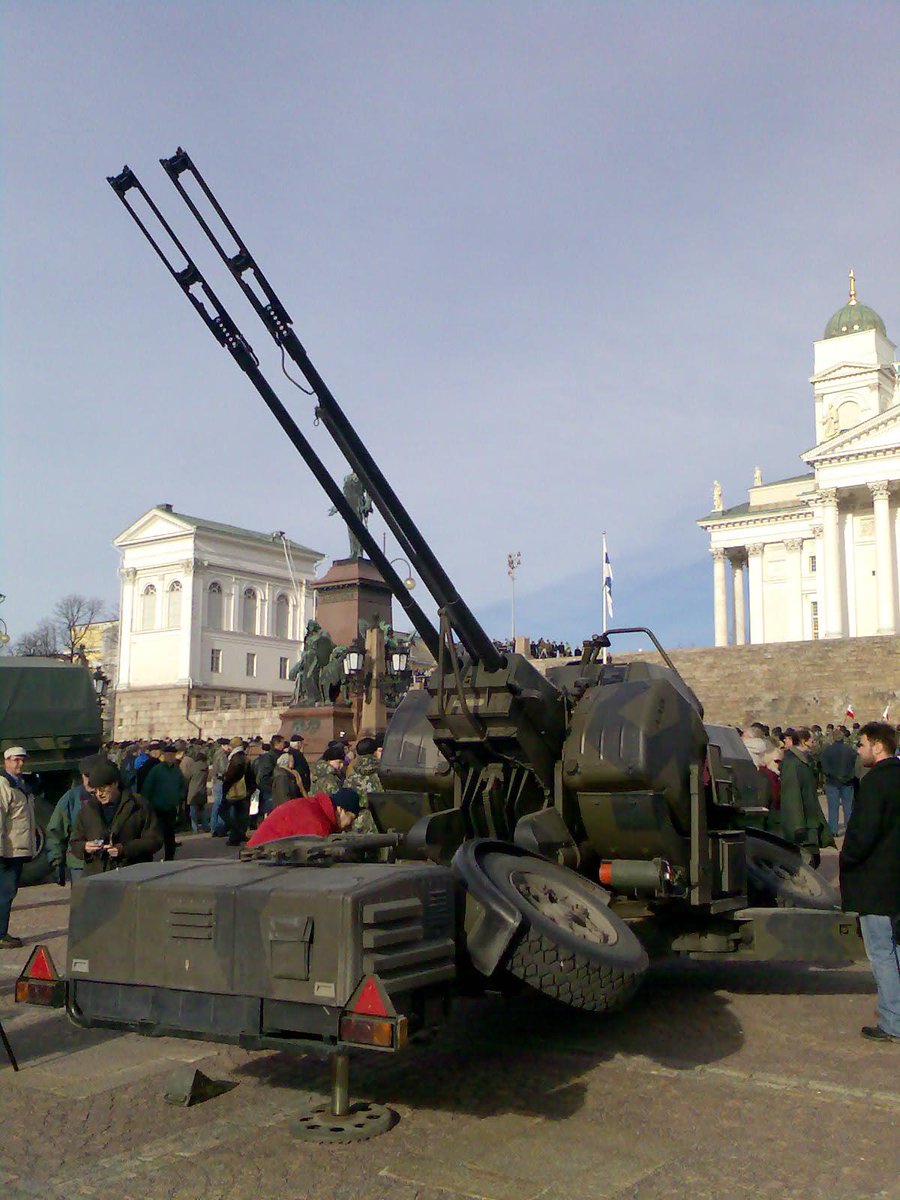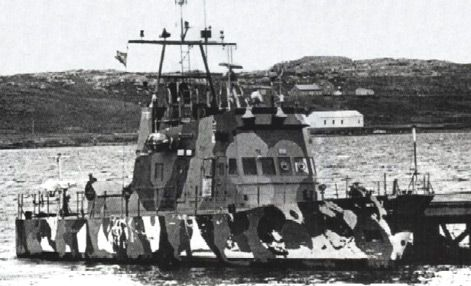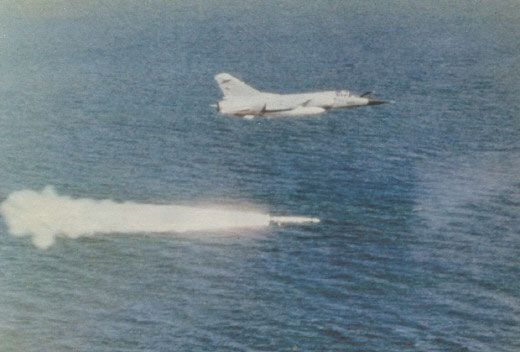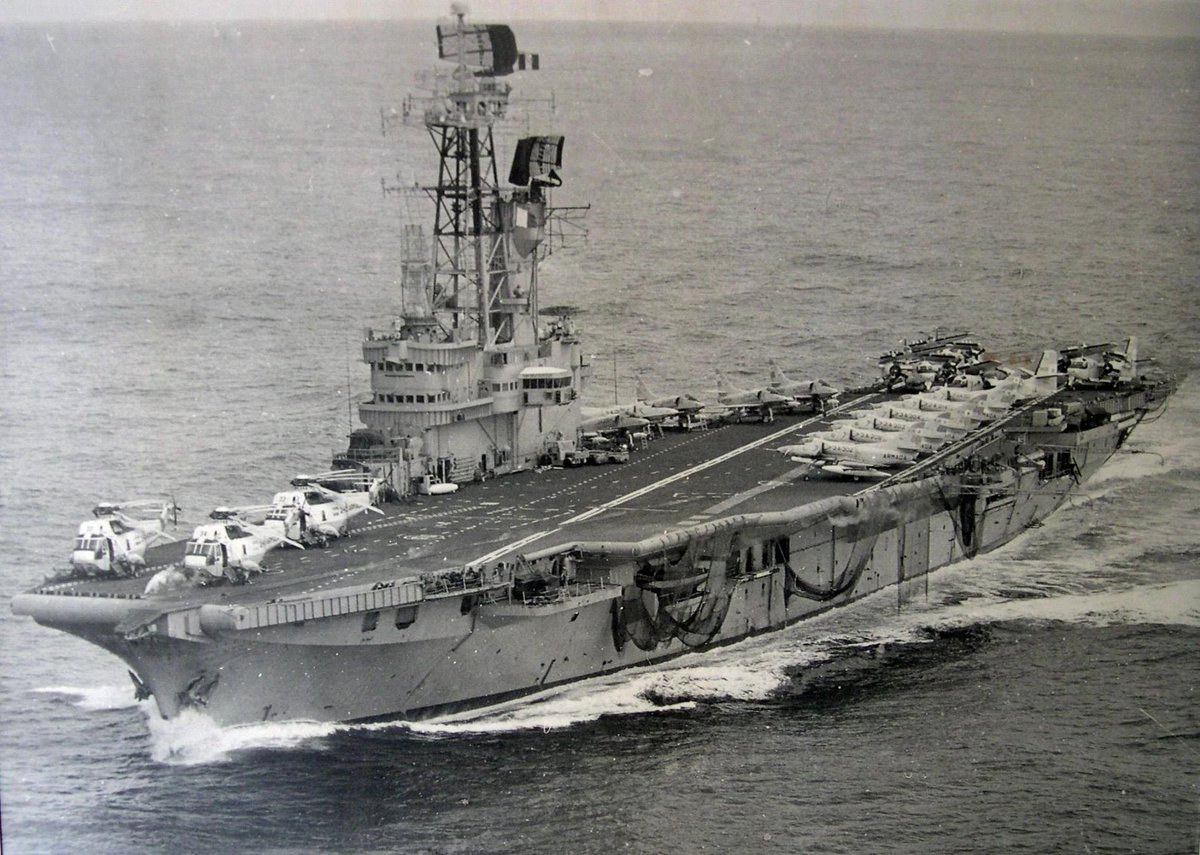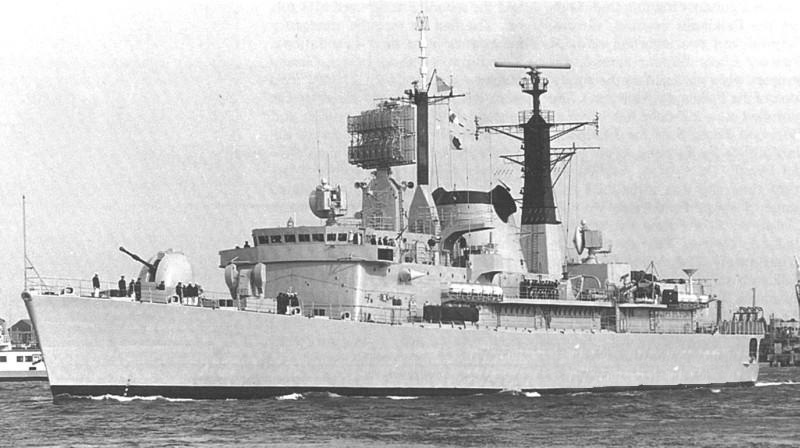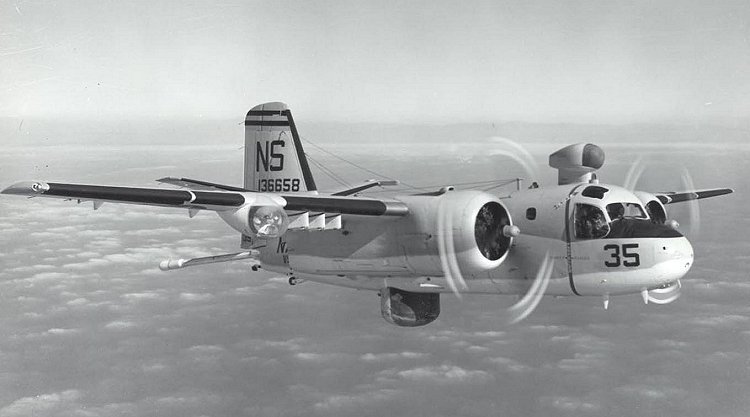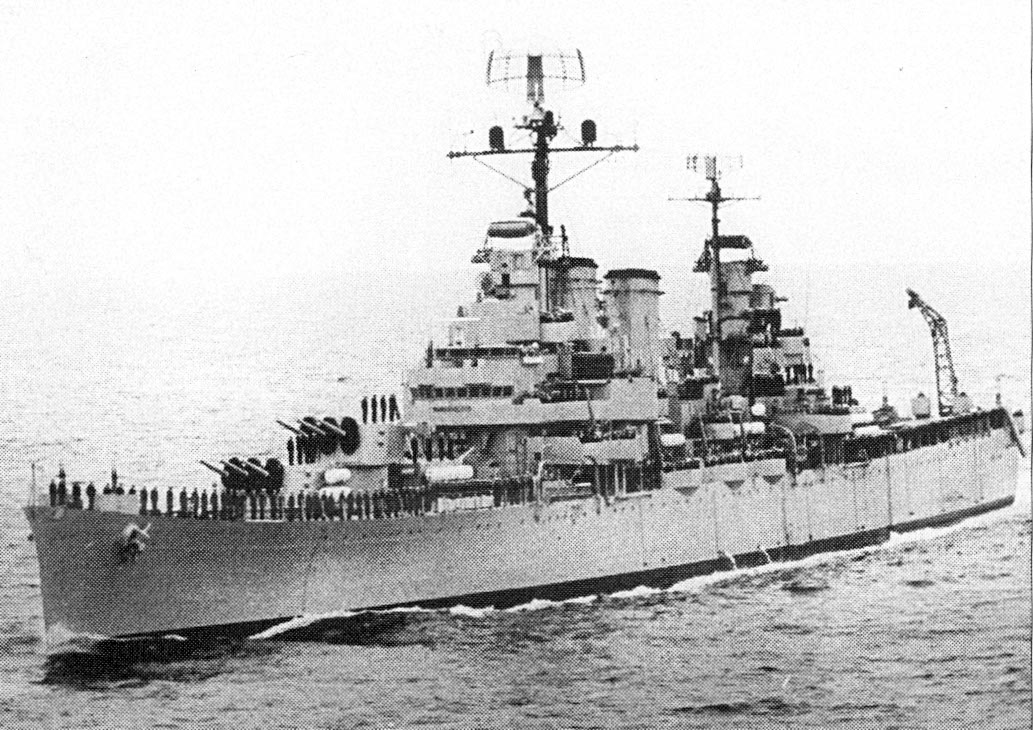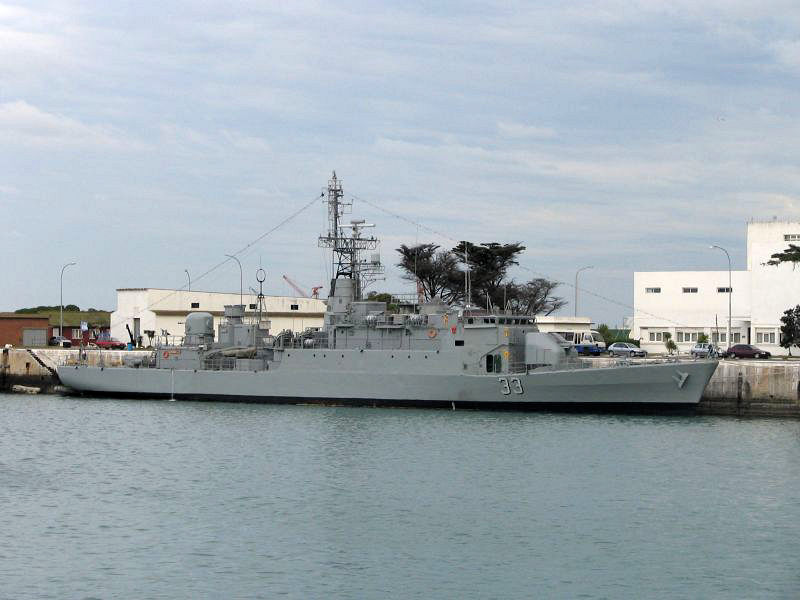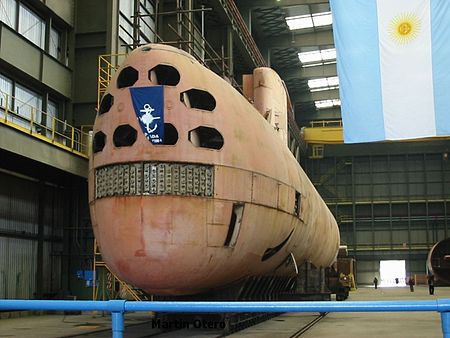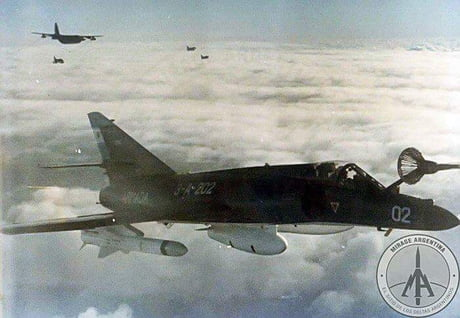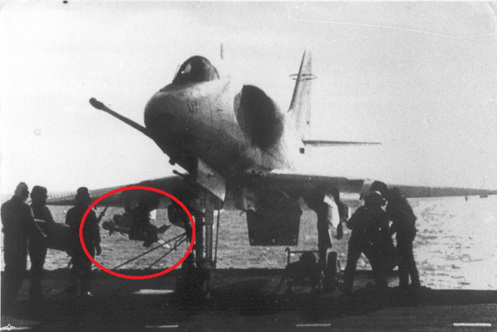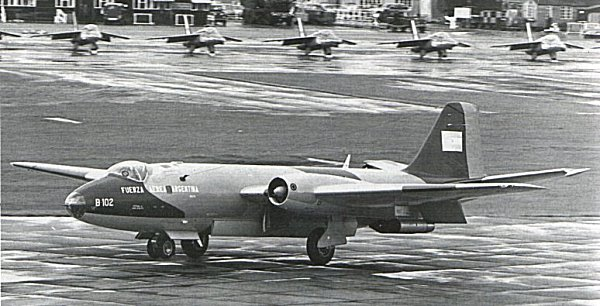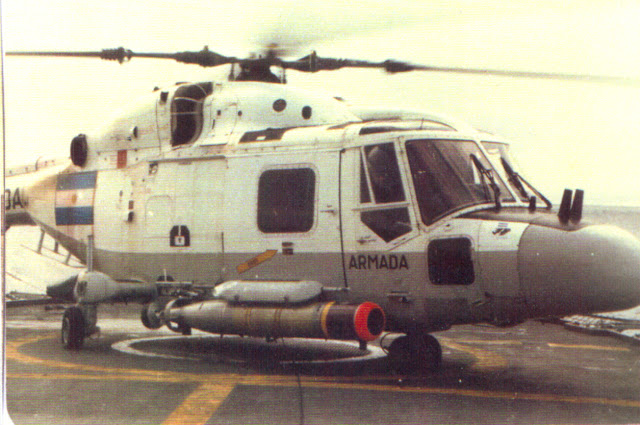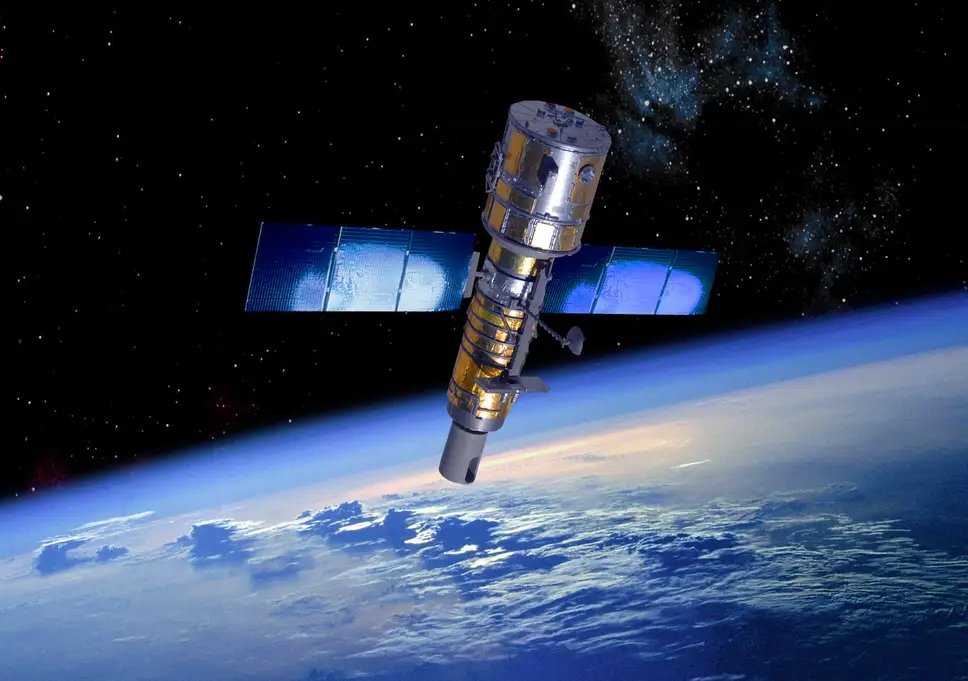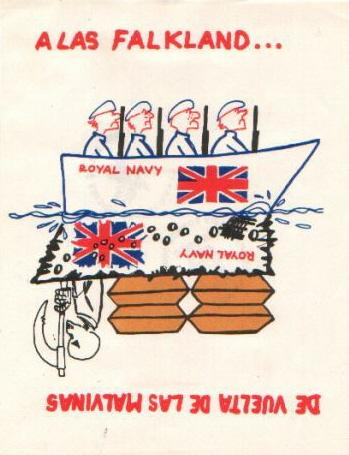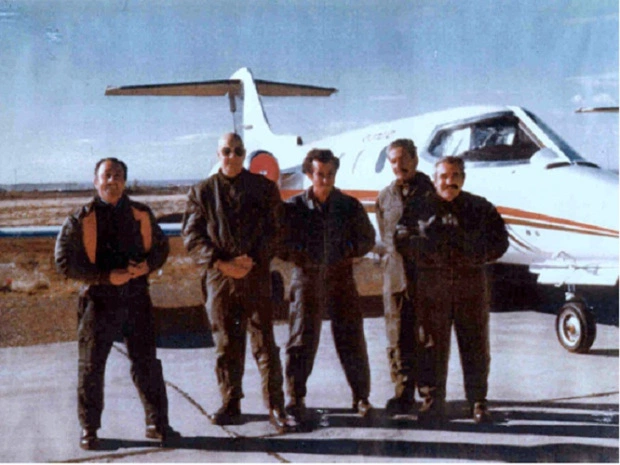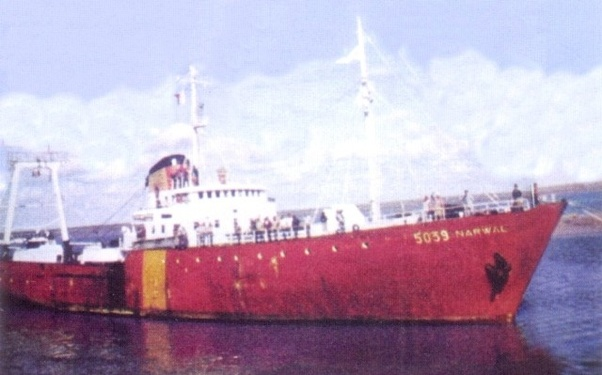1/ A thread on Argentinian equipment during the Falklands War taking a look at how a nation can rapidly become a near-peer for conflict through peer-arming and the danger of underestimation.
2/ We& #39;ll use six of the "modern" multi-domain lenses: Land, Sea, Air, Space, Cyber and Logistics. This thread is definitely non-exhaustive.
3/ Land.
4/ In excess of 12,000 personnel were deployed by Argentina to the Falklands with a bulk of their Army remaining on the Continent to protect against aggression from Chile.
5/ Contrary to common wisdom, the bulk of the "Conscript" units recalled and rotated in their Reservists from the previous year& #39;s training, effectively fresh from a 10 month training program.
6/ Their primary infantry weapon was the Belgian designed FN FAL, the same base system underlying the British SLR, the majority license-built in Rosario, Argentina along with ammunition.
7/ Austrian Steyr Aug& #39;s, US supplied M16A1& #39;s and L34A1 Suppressed Sterling& #39;s were also used in surprising numbers, the latter two also by the British Forces.
9/ Another system used by both sides was the Shorts Blowpipe MANPAD. Argentina also used Soviet-supplied SA-7 Grail& #39;s.
10/ In addition to a number of light and heavy (120mm) mortars, Argentina also deployed Italian OTO Melaria 105mm and indigenous CITEFA 155mm howitzers.
11/ Although Argentina withdrew their LVTP-7 ATV& #39;s, 90mm equipped French Panhard AML& #39;s were deployed along with indigenous towed Model 1968 105mm Recoilless Rifles.
12/ Anti-aircraft artillery included West German Rheinmetall 20mm, French Hispania Suiza 30mm, Swiss Oerlikon twin 35mm and Swiss-Swedish Skyguard fire control radars along with ex-RAF Tigercat SAM& #39;s.
13/ Sea.
15/ French AM39 and MM38 Exocet missiles together with NATO-common iron bombs, the latter now believed to have been sourced through Israel via Peru, were arguably the largest threats carried by these Task Groups to the British Fleet.
16/ Task Group 79.1 was a Carrier Group comprised of ARA Veinticinco de Mayo - the ex-HMS Venerable refit via the Royal Netherlands Navy - and two British built Type 42 Air Warfare Destroyers, the same Type as operated by the British fleet.
17/ ARA Veinticinco de Mayo carried a wing of Skyhawks and US S-2E Trackers for ASW and maritime patrol. The Trackers detected the British Task Group 317.8 en route but weather prevented an early Skyhawk attack.
18/ ARA General Belgrano& #39;s Task Group is well documented. It is worth noting that this WWII era armoured cruiser was equipped with Exocet missiles.
19/ Noteworthy is Task Group 79.4 comprised of three French-built Drummond-class corvette& #39;s, all three Exocet equipped.
20/ Argentina made good use of her Submarine force overall, including one of her West German Type 209 diesel-electric SSK& #39;s which concerned the British fleet throughout.
21/ Air.
22/ US and Israel sourced Skyhawks along with French Super Etendard and the indigenous Pucara are often the first aircraft that come to mind on the Argentinian side from the conflict.
23/ In addition, Israel-supplied Nesher (renamed Dagger, based on the French Mirage 5) were undergoing a refit to meet Kfir C.2 standards using Marconi Electronic Systems components and some were complete.
24/ Both sides were equipped with Sidewinder missiles (B vs L) with Argentina also sporting French and Israeli sourced AAM& #39;s.
26/ French and Israeli supported Mirage III& #39;s were largely pulled back to protect Continental sites following the Black Buck raids - although they were shorter ranged, arguably a strategic effect of the Vulcan presence.
27/ Also supporting the Argentine operations were US built Sea King& #39;s, British built Lynx, a squadron of US-surplus UH-1H and a number of C-130 Hercules. Numerous civilian aircraft were available.
28/ Space.
29/ Five weeks after the invasion, the Soviet Union launched the Kosmos-1365 spy satellite with the purpose of providing situation intelligence to Argentina.
30/ In addition, the existing Kosmos-1368 photographic spy satellite was re-tasked to overfly over the Falklands at a distance of 240km at 11am during May and June 1982.
31/ Overflights were also reportedly carried out by the existing Kosmos-1455 electronic spy satellite and the Kosmos-1372 radar spy satellite.
32/ Cyber.
33/ Argentina succeeded in gaining general support from all South American nations with the exception of Chile who remains in particular a close friend of Britain to this day.
34/ The Soviet Union posted large sums of money for numerous propaganda campaigns throughout South America and Western Africa.
35/ Primarily using modified Learjets (which featured advanced civilian navigation and sensor systems), the Fenix Squadron provided communication relay and pathfinder flights.
36/ The Soviet Union performed numerous long ranged reconnaissance and spy missions from their bases in Angola with notable information supplied to Argentina.
37/ In the early period of the War, US built SP-2H aircraft also performed SIGINT and communications relay tasks in addition to their patrol roles.
38/ Nine Argentinian Spy Trawlers were identified throughout the War. Some were warned off or engaged.
39/ Logistics.
40/ There are a number of excellent articles on Logistics (see Further Reading below) so I will only touch on a few notable or less covered points here.
41/ Due to the proximity of the Falkland Islands to the South American Continent, Argentina& #39;s potential for logistics vastly overmatched the British Expeditionary Task Force.
42/ Most of the Argentine Task Forces retained their own Tanker/Supply ships with the remainder drawing from a Theatre Pool or "performing sorties" from Ports.
43/ Seven cargo vessels and several Fokker F-28 aircraft were used in Blockade Runner supply runs to the Island.
44/ Summary.
45/ During the Falkland& #39;s war, peer-arming leading up to and during the conflict elevated Argentina to near-peer status for the UK. Argentina was ostensibly a locally-superior opponent.
46/ With direct action from Allies difficult to arrange for reasons ranging from political to reluctance, the UK was wise to approach the conflict as a peer-conflict.
47/ Further Reading.
48/ I heartily recommend a number of incredibly well researched articles by Think Defence to expand your knowledge of the War: https://www.thinkdefence.co.uk/tag/falkland-islands/">https://www.thinkdefence.co.uk/tag/falkl...
/FIN
Could you unroll please @threadreaderapp?

 Read on Twitter
Read on Twitter